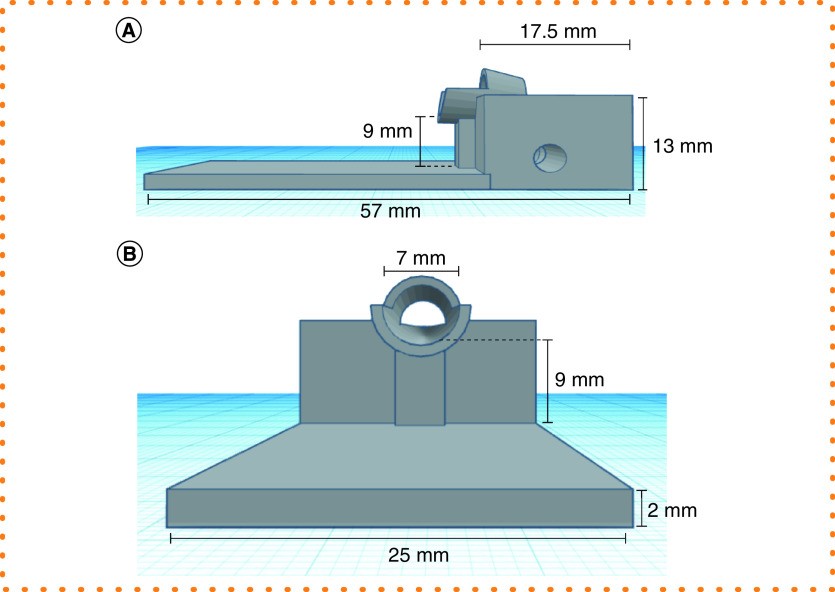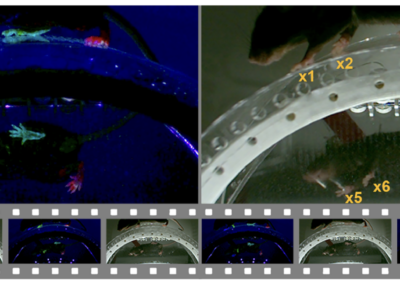Pedro Olivetti and colleagues have designed a novel 3D printed device for stereotaxic viral delivery into the brains of neonatal mice. Postnatal development corresponds to a critical period of dynamic changes in the brain such as neural migration and synaptic growth that, when disrupted, can result in maladaptive neural function. Several rodent models of neurodevelopmental disorders require accurate methods for delivering viruses into newborn rodents. conventional stereotaxic apparatuses are not able to properly affix the soft skull of neonatal mice, often requiring the researcher to manually hold the mouse’s head during injection. This lack of reliability in position may lead to off target viral delivery, thereby, compromising the subject. The proposed 3D printed adaptor fits into the ear and tooth bars of an adult stereotaxic apparatus. The device improves stability allowing for more precise positioning of injection. The 3D printer file can also be modified as needed to fit mice of different ages. In their paper, Olivetti et al. provide a detailed validation of their device by injecting A2a-Cre mice with Cre-dependent hM4D-mCherry viral construct in striatal indirect pathway neurons, and Cre-dependent green fluorescent protein virus in Dat-IRES-Cre mice in dopaminergic midbrain neurons on post natal day 1. These mice went on to demonstrate successful selective expression in these neurons. Thus, the proposed stereotaxic adaptor is an easy way to improve the accuracy of viral delivery into neonatal mice. This research tool was created by your colleagues. Please acknowledge the Principal Investigator, cite the article in which the tool was described, and include an RRID in the Materials and Methods of your future publications. RRID:SCR_022349 Check out projects similar to this!Neonatal Stereotaxic Mouse Adaptor

Have questions? Send us an email!





